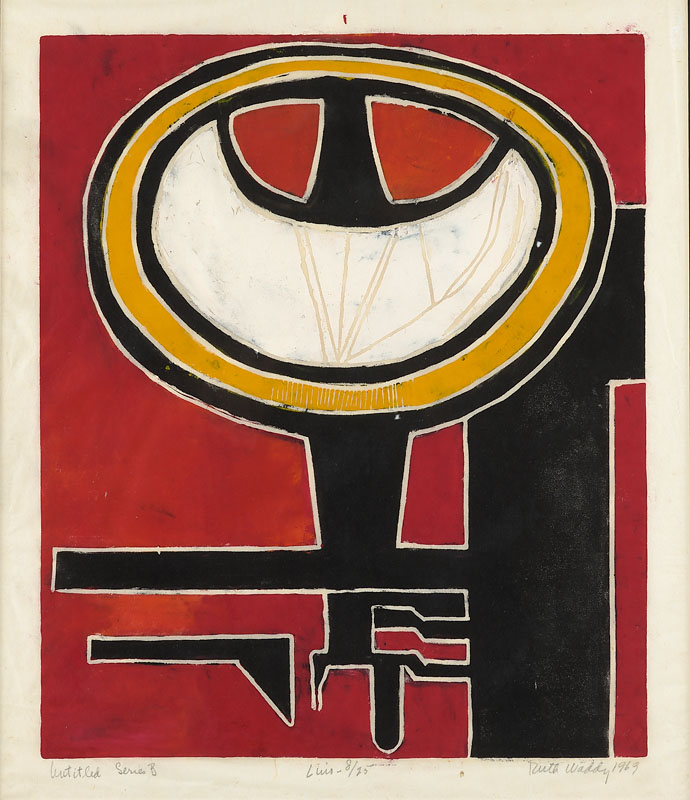Ruth Waddy (1902-2003)
Willanna Ruth Gilliam was born in Lincoln, Nebraska in 1909, and raised in Minneapolis, Minnesota, daughter of John Moses Gilliam and Willie Anna Choran Gilliam.[1]Her father worked as a waiter on the railroads; he died when Ruth was thirteen years old. She attended the University of Minnesota to train for teaching, but left school to work as a domestic servant in Chicago, to help support her family during the Depression. During World War II she moved with her young daughter to Los Angeles, California to work as a riveter at Douglas Aircraft Corporation. After the war she worked at a county hospital, where one of her co-workers was designer Noah Purifoy.[2]
Waddy was in her fifties when she turned to a career in art, especially as a linocut printmaker.[3] In 1962, Waddy founded Art West Associated, to gather and support the community of African-American artists in Los Angeles.[4][5][6][7] She studied briefly at Otis Art Institute, now called Otis College of Art and Design in 1965, and the following year traveled to the Soviet Union for an exhibit of African-American art, organized by a Chicago friend, Margaret Burroughs.[8] Also in 1966, her work was part of "The Negro in American Art," a traveling exhibition funded by the California Arts Commission.[9]
Waddy embarked on a cross-country bus trip to gather works for Prints by American Negro Artists (1967), a project funded by the National Endowment for the Arts. With Samella Lewis she edited Black Artists on Art (1969 and 1971).[10][11][12] She received awards from the Compton College in 1972, from the League of Allied Artists in 1981, from the California African American Museum in 1983, and the Vesta Award from the Woman's Building in 1986.[13] She was one of twelve African-American artists honored by the Los Angeles Bicentennial in 1981.[14] She also received a lifetime achievement award from the Women's Caucus for Art in 2001,[15] and an honorary doctorate from Otis Art Institute (now called Otis College of Art and Design) in 1987; the citation read, in part, "Your strong graphic images strike us with aesthetic, emotional, and social power, and your dedication to seeking out the distinctive experience of black artists in America has widened that power."[16]
Bio courtesy of www.wikipedia.org. link to full bio: https://en.wikipedia.org/wiki/Ruth_G._Waddy

Untitled Series B
Linocut
20x16 inches
1969
Signed, dated and numbered
Photo credit: John Wilson White Studio

The Fence
Linocut on newspaper
16 1/2x14 inches
1969
Signed, titled and numbered
Photo credit: John Wilson White Studio